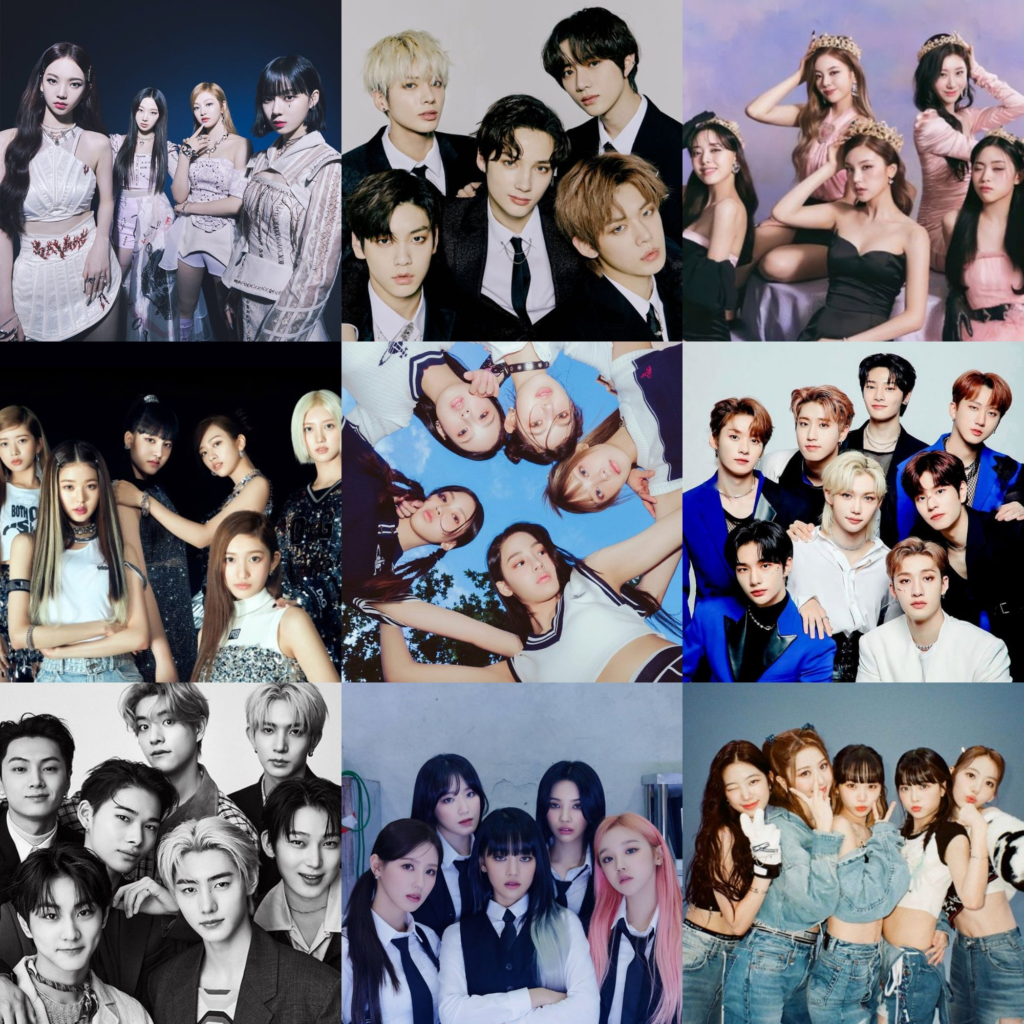The Evolution of K-pop: A Journey Through the History of Korean Pop Music

K-pop, short for Korean pop music, is a global phenomenon that has taken the world by storm over the past few decades. With its catchy tunes, intricate choreography, and charismatic idols, K-pop has captivated millions of fans across the globe. But how did K-pop become the cultural force it is today? Here, we’ll explore the fascinating history of K-pop, tracing its roots from the early influences of Western music to its current status as a global powerhouse in the music industry.
1. The Origins: Early Influences and Foundations

The history of K-pop dates back to the early 20th century, long before the term “K-pop” was coined. During the Japanese occupation of Korea (1910-1945), Western music began to influence Korean culture. Jazz, blues, and rock ‘n’ roll, brought by American soldiers stationed in Korea during the Korean War (1950-1953), played a significant role in shaping the early music scene.
In the 1960s, Korean musicians started experimenting with Western musical styles, blending them with traditional Korean sounds. One of the most notable figures of this era was Shin Joong-hyun, often referred to as the “Godfather of Korean Rock.” Shin’s innovative fusion of rock with Korean folk music laid the groundwork for the development of modern Korean pop music.
2. The Birth of Modern K-pop: The 1990s Revolution

The 1990s marked a turning point in the history of K-pop, with the emergence of the first generation of K-pop idols. The catalyst for this revolution was the debut of Seo Taiji and Boys in 1992. The group’s fusion of rap, rock, and dance music with socially conscious lyrics struck a chord with the youth, leading to widespread popularity. Seo Taiji and Boys are often credited with breaking the mold of traditional Korean music and paving the way for the modern K-pop industry.
Following the success of Seo Taiji and Boys, entertainment companies began to take notice of the potential of K-pop. In 1995, Lee Soo-man, the founder of SM Entertainment, debuted the boy group H.O.T., which became an instant sensation. H.O.T.’s success set the template for future K-pop groups, with a focus on visually appealing idols, synchronized dance routines, and catchy songs.
Other entertainment companies soon followed suit, with YG Entertainment (founded by Yang Hyun-suk, a former member of Seo Taiji and Boys) and JYP Entertainment (founded by Park Jin-young) emerging as major players in the industry. These companies would go on to produce some of the most iconic K-pop groups of all time.
3. The Rise of the Hallyu Wave: 2000s and Beyond

The 2000s saw the rise of the Hallyu wave, or the “Korean Wave,” a term used to describe the growing global popularity of Korean culture, including K-pop, television dramas, and films. This period marked the beginning of K-pop’s expansion beyond Korea’s borders.
One of the key factors in the global spread of K-pop was the advent of the internet and social media platforms. K-pop companies quickly realized the power of the internet in reaching international audiences, and they began to utilize platforms like YouTube, Twitter, and Facebook to promote their artists. This digital strategy proved to be highly effective, as K-pop music videos and performances began to garner millions of views from fans around the world.
Groups like TVXQ, Super Junior, Girls’ Generation, and Big Bang were at the forefront of the Hallyu wave, achieving unprecedented levels of success in Asia and beyond. Girls’ Generation’s “Gee” (2009) became one of the most iconic K-pop songs of all time, while Big Bang’s innovative music and fashion sense helped them gain a massive international following.
4. The Third Generation: Global Domination

The 2010s ushered in the third generation of K-pop, characterized by a more polished and diverse sound, as well as a stronger emphasis on global appeal. This era saw the rise of groups like EXO, BTS, TWICE, and BLACKPINK, who would go on to become some of the biggest names in K-pop history.

BTS, in particular, played a pivotal role in bringing K-pop to the global stage. Debuting in 2013 under Big Hit Entertainment (now known as HYBE Corporation), BTS’s music, which often addresses social and personal issues, resonated with a global audience. The group’s dedicated fanbase, known as ARMY, played a crucial role in their success, using social media to spread BTS’s music and message worldwide.
In 2018, BTS became the first K-pop group to top the Billboard 200 chart with their album “Love Yourself: Tear,” a historic achievement that solidified their status as global superstars. Since then, BTS has continued to break records and win numerous awards, including Grammy nominations, making them one of the most influential music acts in the world.

BLACKPINK, another powerhouse group, made waves with their fierce performances and stylish image. They became the first K-pop girl group to perform at Coachella in 2019, further cementing K-pop’s presence in the Western music scene. Their collaboration with international artists like Lady Gaga and Selena Gomez also showcased the genre’s versatility and global reach.
5. The Fourth Generation: The Future of K-pop

As we move into the 2020s, the fourth generation of K-pop is beginning to take shape. This new generation is characterized by even greater diversity in music styles, concepts, and member compositions. Groups like Stray Kids, ATEEZ, (G)I-DLE, TXT, ITZY, ENHYPEN, aespa, IVE, LE SSERAFIM, and NewJeans are leading the charge, bringing fresh energy and innovation to the industry.
One of the defining features of the fourth generation is the increased focus on self-production. Many new K-pop idols are not just performers but also songwriters, producers, and choreographers, contributing to the creative process in ways that were less common in previous generations. This trend reflects a shift towards more authentic and personal artistry within the K-pop industry.
The fourth generation is also more digitally savvy, with groups utilizing platforms like TikTok and V Live to engage with fans in real-time. This direct interaction with fans has helped to create even stronger fan communities and has allowed K-pop to maintain its momentum in the ever-evolving music landscape.
6. The Impact of K-pop on Global Culture
K-pop’s influence extends far beyond music. The genre has had a significant impact on fashion, beauty, and even language. K-pop idols are often seen as trendsetters, with their styles and looks being emulated by fans worldwide. The “K-beauty” industry, which includes skincare and makeup products inspired by K-pop idols, has also seen explosive growth in recent years.
Moreover, K-pop has contributed to the global spread of the Korean language and culture. Many international fans have taken an interest in learning Korean to better understand the lyrics of their favorite songs and to communicate with other fans. Korean cultural elements, such as food, traditional clothing, and customs, have also gained popularity through K-pop’s global reach.

The rise of K-pop has also led to increased interest in other aspects of Korean culture, including K-dramas, films, and literature. The success of the 2019 film “Parasite,” which won the Academy Award for Best Picture, and the global popularity of the Netflix series “Squid Game” are just a few examples of how Korean culture has permeated the global entertainment industry.
7. Challenges and Controversies
Despite its success, the K-pop industry has faced its share of challenges and controversies. The intense training and pressure that idols undergo to maintain a perfect image have been widely criticized. There have been numerous reports of mental health issues among idols, as well as cases of mistreatment and exploitation by entertainment companies.
The industry’s competitive nature has also led to issues such as fan wars, where rival fanbases engage in online conflicts. Additionally, there have been concerns about cultural appropriation and the commercialization of K-pop, with some arguing that the industry’s pursuit of global success has led to a dilution of its cultural identity.
However, these challenges have also sparked important conversations about the well-being of idols and the need for reform within the industry. Fans and advocacy groups have been vocal in demanding better treatment and mental health support for idols, and there have been some positive changes in response to these concerns.
8. The Future of K-pop
As K-pop continues to evolve, its future looks bright. The genre has shown an incredible ability to adapt and innovate, and its global fanbase continues to grow. With the fourth generation of K-pop leading the way, we can expect to see even more diversity, creativity, and boundary-pushing concepts in the years to come.

K-pop’s journey from its early beginnings to its current status as a global cultural force is a testament to the power of music to transcend borders and bring people together. As K-pop continues to break new ground and reach new heights, it will undoubtedly remain a significant and influential part of the global music landscape.
The history of K-pop is a story of innovation, resilience, and cultural exchange. From its roots in the early 20th century to its current position as a global phenomenon, K-pop has continually reinvented itself while staying true to its core values of creativity and passion. As we look to the future, K-pop’s impact on the world of music and beyond is set to grow even stronger, leaving an indelible mark on global culture.
K-pop is more than just music; it’s a cultural movement that has inspired millions and continues to shape the world in new and exciting ways. Whether you’re a longtime fan or new to the genre, the history of K-pop offers a fascinating glimpse into how a small country in East Asia transformed its music into a global sensation.
